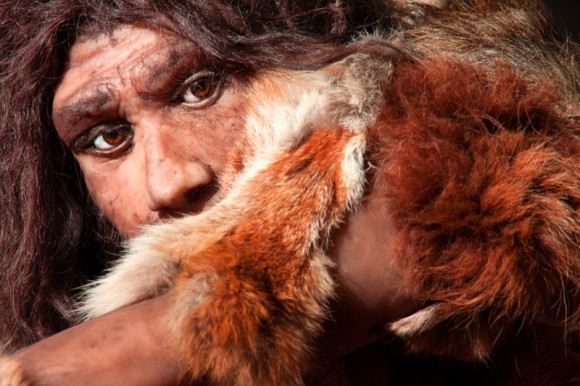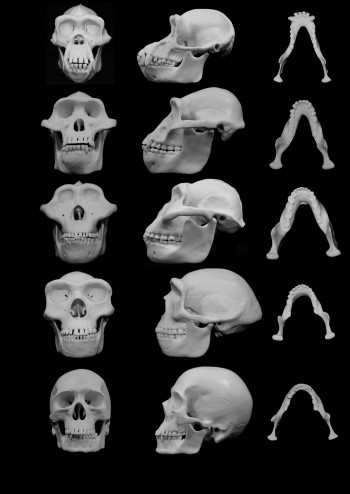
What contributed to the evolution of faces in the ape-like ancestors of humans?
The prehistoric version of a bar fight—over women, resources and other slug-worthy disagreements. That’s according to new research from the University of Utah published in the journal Biological Reviews on June 9.

The researchers contend that human faces—especially those of our australopith ancestors—evolved to minimize injury from punches to the face during fights between males.
The findings present an alternative to the previous long-held hypothesis that the evolution of the robust faces of our early ancestors resulted largely from the need to chew hard-to-crush foods such as nuts. David Carrier is lead author of the study. He said:
The australopiths were characterized by a suite of traits that may have improved fighting ability, including hand proportions that allow formation of a fist; effectively turning the delicate musculoskeletal system of the hand into a club effective for striking.
If indeed the evolution of our hand proportions were associated with selection for fighting behavior you might expect the primary target, the face, to have undergone evolution to better protect it from injury when punched.
The rationale for the research conclusions came from determining a number of different elements, said Carrier.
When modern humans fight hand-to-hand the face is usually the primary target. What we found was that the bones that suffer the highest rates of fracture in fights are the same parts of the skull that exhibited the greatest increase in robusticity during the evolution of basal hominins. These bones are also the parts of the skull that show the greatest difference between males and females in both australopiths and humans. In other words, male and female faces are different because the parts of the skull that break in fights are bigger in males.
Importantly, these facial features appear in the fossil record at approximately the same time that our ancestors evolved hand proportions that allow the formation of a fist.
The latest study by Carrier and Morgan builds on their previous work, which indicates that violence played a greater role in human evolution than is generally accepted by many anthropologists.











